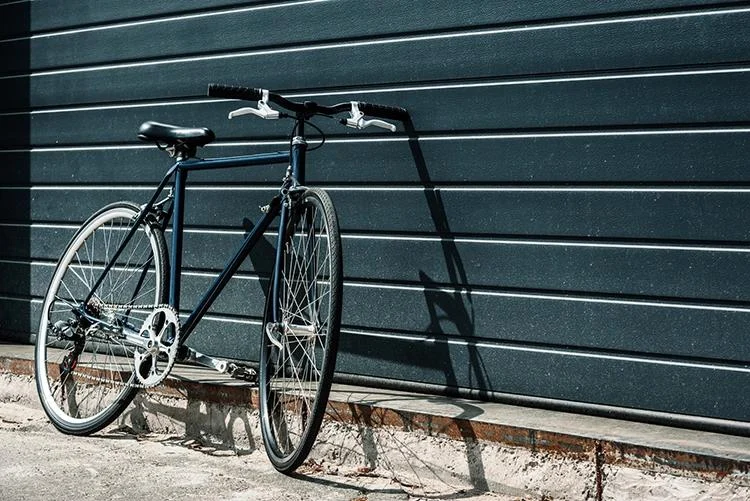
- 1-understanding-the-benefits-of-a-carbon-bike
- 2-is-it-time-to-upgrade-to-a-carbon-bike
- 3-performance-vs-budget-what-matters-most
- 4-real-rider-experiences-and-upgrade-stories
- 5-where-to-find-the-right-carbon-bike-for-you
1. Understanding the Benefits of a Carbon Bike
If you’ve been cycling for a while, you’ve likely heard the hype around carbon bikes. Lightweight, aerodynamic, and responsive—carbon frames have become the gold standard for road and performance cyclists. But why all the fuss?
Carbon fiber allows bike manufacturers to create frames with complex shapes that maximize strength while minimizing weight. This leads to faster acceleration, smoother climbing, and better handling, especially on long rides or competitive circuits. It’s not just about speed—it's about efficiency and comfort.
2. Is It Time to Upgrade to a Carbon Bike?
2.1 Signs You Might Be Ready
If you're consistently riding over 100 miles a week, entering local races, or you simply feel like your current aluminum or steel frame is holding you back, it might be time to consider the upgrade. A carbon bike can transform your ride, giving you that extra edge on climbs and sprints.
2.2 When It Might Be Too Soon
However, beginners or casual riders may not immediately notice the difference a carbon frame offers—at least not enough to justify the higher price. If you're still figuring out your riding style, logging limited mileage, or sticking to flatter terrain, upgrading might be premature.
3. Performance vs Budget: What Matters Most?
Let’s talk about the elephant in the room—price. Carbon bikes don’t come cheap. You’re often looking at $2,000 and up for entry-level models. But the cost isn’t just about materials; it’s about the technology, precision engineering, and often, brand reputation.
Ask yourself: Are you pushing your current bike to its limits? Do you notice fatigue or stiffness after long rides? Do you want to cut race times or improve your climbing speed? If the answer is yes to most of those, the investment in a carbon bike can be fully justified.
4. Real Rider Experiences and Upgrade Stories
Take Liz, a recreational cyclist who upgraded to a carbon road bike after training for a century ride. “The first hill I climbed with my new bike, I thought something was wrong—it felt that easy,” she laughs. “It was like someone took ten pounds off my legs.”
Or Nate, a gravel rider who moved from aluminum to carbon to deal with wrist pain. “I didn’t think it would make much difference, but the vibration damping was a game changer. I ride longer now and actually enjoy the rough sections.”
Stories like these are common. And they’re proof that the decision isn’t just about ego—it’s about making your rides more enjoyable and sustainable in the long run.
5. Where to Find the Right Carbon Bike for You
Once you’ve decided to upgrade, finding the right carbon bike is critical. It’s not just about brand or style—it’s about fit, purpose, and reliability. Whether you're looking for a racing machine, a versatile endurance frame, or a gravel-specific model, proper research and expert advice go a long way.
You can visit Cycling Guider to compare the best-rated carbon bikes of 2025 and get tailored suggestions based on your riding goals. Whether you're climbing mountains or cruising through country roads, the right upgrade can completely redefine your cycling experience.







 Billet BMX5.0 (2 reviews)
Billet BMX5.0 (2 reviews) Far East Children Bicycle Factory1.0 (1 reviews)
Far East Children Bicycle Factory1.0 (1 reviews) Archer Motorsports, Inc.4.0 (8 reviews)
Archer Motorsports, Inc.4.0 (8 reviews) YEP Bike Works4.0 (55 reviews)
YEP Bike Works4.0 (55 reviews) Gorham Bike & Ski4.0 (498 reviews)
Gorham Bike & Ski4.0 (498 reviews) Alchemy Bikes4.0 (37 reviews)
Alchemy Bikes4.0 (37 reviews) How to Teach Kids to Ride a Bike: A Step-by-Step Guide for Parents
How to Teach Kids to Ride a Bike: A Step-by-Step Guide for Parents Tips for Riding on Busy City Streets: Smart Strategies for Urban Cyclists
Tips for Riding on Busy City Streets: Smart Strategies for Urban Cyclists Best US National Parks for Mountain Biking: Ride Epic Trails Across America
Best US National Parks for Mountain Biking: Ride Epic Trails Across America Best Aero Helmets for Time Trials and Racing
Best Aero Helmets for Time Trials and Racing How to Clean and Lubricate Your Bike Chain Like a Pro
How to Clean and Lubricate Your Bike Chain Like a Pro 10 Must-Have Items for Long-Distance Cycling Trips
10 Must-Have Items for Long-Distance Cycling Trips